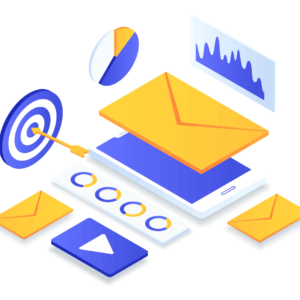Supercharge Your Dealership’s Email Marketing Strategy
Email Marketing can be daunting! What strategy to use, how to format it. Where to find and how to build your email list. Where to come up with content, the list goes on and on. Although it may be a little scary, email marketing is one of the best ways to connect with and build relationships with customers as well as push them through the marketing funnel. It is key to have a strong strategy in place or you can waste a lot of time creating content that people wont open or not have subscribers to send your emails to.
What Makes Email Marketing Worth the Time and Effort?
Think about how many emails you read and send in a day? Chances are, it’s more than one. There are more than 4 billion daily email users. That is a lot of emails! On average, email has an ROI of $36 for every dollar spent – higher than any other channel. With 50% of people buy from marketing emails at least once per month. So, if you’re not using email to market your business, you’re missing out on a huge opportunity!
Components of an Explosive Email Strategy
It is important that you follow a process rather than just skipping ahead to creating content to ensure that you hit all your marks and create a successful strategy.
- Set Goals and Success Metrics: You will need to create goals for what you are trying to accomplish with your email marketing strategy. Use SMART goals. SMART goals are specific, measurable, attainable, realistic and time sensitive. An example of a SMART goal is; By the end of the quarter, you want a 5% higher click-through rate on your emails. It is also important to decide which metrics you will use to determine success or failure. In the example above, your click through rate would be your Key Performance Indicator or Metric.
- Target Market Research: You will need to research your target audience. You want to gain as much information as you can about them. The more you know the better you will be able to understand your target audience, and ultimately, create the type of content they will care about.
- Review Previous Years End of Year Data: Using insights from this data, you can figure out which are your most effective email tactics. Your year end data will also show where your customers were engaged across all channels. By taking a look at the whole picture, you can keep yourself from having to start from scratch, or make the same mistakes.
- Segment Your List: This is a vital part of a winning email marketing campaign. This is where you start personalizing based on each clients need. Segments allow you to send more personalized messages, and you meet your customers at different points along their journey. This can increase your open rate, help you to become more authoritative and improve your lead nurturing efforts.
- Start with Federal Holidays and Important Business Dates: For each of your key dates, you will need to decide how far in advance you need to start marketing for it. This will give you a good start and make sure that you are hitting important events your customer’s lives.
Grow Your Email List
A growth plan for your email marketing is essential to success. Growing your email list allows you to have a greater reach with your marketing efforts. There are many ways to grow your email list. For example, you can offer an incentive for signing up for your emails, like a coupon or access to exclusive content. This will motivate people to give you their email address because they will be getting something valuable in return.
A well-designed landing page on your website that is dedicated to driving email signups is a great way to increase your list. You can use social media platforms and PPC ads to boost traffic to your signup page. Another variation of this is to add a pop-up to your website. This way, when a customer is browsing your site, the pop-up will appear and request their email. They must then interact with the box to remove it, which in turn can help motivate people to sign up for your email list!
Create Killer Content
The last thing that you want to do is over promise and under deliver. You must provide content that your subscribers want to see, or they won’t be your subscribers for long! Utilizing your target market research, you know more about what your customers like and do, so you can create your content, centered on what your ideal audience cares about.
It is also extremely important to be consistent. Your audience will get used to seeing your dealership’s name and logo. This helps to keep you top of mind when your audience needs a product or service you offer and increases the likelihood they will use your dealership.
Choose a Platform That Best Suits Your Needs
There are many email marketing platforms out there, as well as many all in one marketing platforms as well. A few favorites are MailChimp, Constant Contact and DealerAmp.
- Mailchimp– with both free and paid options. Mailchimp gives insights into ways to get more opens, clicks and sales. The free option allows use of free email templates and is relatively user friendly.
- Constant Contact– They offer a free trial, however there is not a usable free option after the free trial. There base plan starts at$9.99 a month and includes email templates. Sign-up forms and Posting to social media. Constant contact is a little more user friendly, but that does come at a price.
- DealerAmp– is built specifically for Outdoor Power Equipment Dealerships. It is a one stop marketing automation and messaging platform that takes your dealership marketing to the next level. DealerAmp manages your dealership’s follow up, two-way texting, sales pipeline, scheduling, social media, email marketing, and so much more. This software is packed with features specific to the green industry and will replace all your current marketing tools with just one platform. Schedule a Demo to learn more!
Keep up with all the latest by following us on Facebook and Instagram!

















